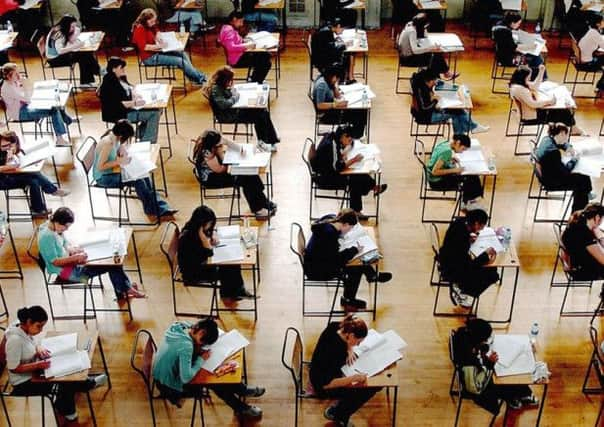How good is your secondary school? Yorkshire's League tables in full


Analysis of today’s secondary school league tables shows there are 32 schools in the region which are failing to meet the Governments’ standards and more than two-thirds of these are academies.
Around one in ten of the state schools in England failing to meet the expected standard are in Yorkshire. The minimum target for schools is to have 40 per cent of pupils achieving five good GCSEs, including English and maths, and to ensure pupils match the national average level of progress in these two subjects.
Advertisement
Hide AdAdvertisement
Hide AdToday’s figures also show schools in two Yorkshire cities remain at the wrong end of the league tables - with less than half of their pupils achieving the benchmark of five A* to C GCSEs including English and maths.
The tables, based on data published by the Department for Education, show how pupils fared in every secondary school in the country last summer.
As a region Yorkshire lags behind much of the rest of the country but the new figures do show improvements in GCSE results in 11 out of the 15 education authority areas.
Across Yorkshire the vast majority of areas saw the numbers of pupils achieving the benchmark increase.
Advertisement
Hide AdAdvertisement
Hide AdThe biggest increase was in Leeds where 55.5 per cent of pupils made the grade compared to 51 per cent last year.
Last year’s league tables had seen some secondary schools in Yorkshire suffer sharp drops in GCSE results as exam reforms came into effect.
The figures from 12 months ago were the first time that only a pupil’s first attempt at an exam counted towards a school’s league table score.
Schools were also affected by the removal of some vocational courses from the tables, and the Government preventing any qualification from counting as equivalent to more than one GCSE and capping the number of non-GCSEs counting in performance measures to two.
Advertisement
Hide AdAdvertisement
Hide AdLast year several head teachers at schools with high proportions of pupils close to the C/D borderline said they had been the hardest hit by the reforms.
However this year the results appear to have been more positive with most areas of the region improving.
Yorkshire’s best performing area for GCSE passes was again York where 63.7 per cent of pupils achieved five good grades including English and maths. It was followed by North Yorkshire, Calderdale and Wakefield.
The tables published this morning also show how pupils did at A-level and other post-16 qualifications.
Advertisement
Hide AdAdvertisement
Hide AdIn a table ranking areas by the average point score per pupil Kirklees is ranked third highest in the country while York is fourth and Hull has finished just outside the top ten.
There is also a separate table showing how pupils have performed in vocational subjects.
North Yorkshire, Wakefield and Calderdale are the highest ranked areas in Yorkshire in this national table.
Overall, 324 state secondary schools and five further education colleges in England did not meet the minimum benchmarks this year. Of these, 312 failed to ensure that at least 40 per cent of their pupils gained at least five C grades at GCSE, including English and maths, and that students make good enough progress in these two core subjects.
Advertisement
Hide AdAdvertisement
Hide AdThe other 17 schools were among 327 schools that opted in to a new “Progress 8” performance measure, which looks at the progress of pupils across eight subjects and fell below a certain threshold for this target. From next year, all schools will be measured against “Progress 8”.
A DfE spokesman said that free schools are a key part of the Government’s drive for educational excellence.
“The number of free schools with exam results is still too small to allow robust conclusions to be drawn,” he insisted. “But under-performance at any school is unacceptable, and one of the strengths of the free schools programme is that when we spot failure we can act quickly.”
In total, 250,955 youngsters are being taught in under-performing state secondary schools, the data reveals. This is down from last year, when around 274,351 were in schools considered failing.
Advertisement
Hide AdAdvertisement
Hide AdThe DfE said results that overall academies are “leading the way.”
LEAGUE TABLES IN FULL
THE government has published performance tables for every secondary school. Click the links to view tables for each local authority, from the Department for Education: